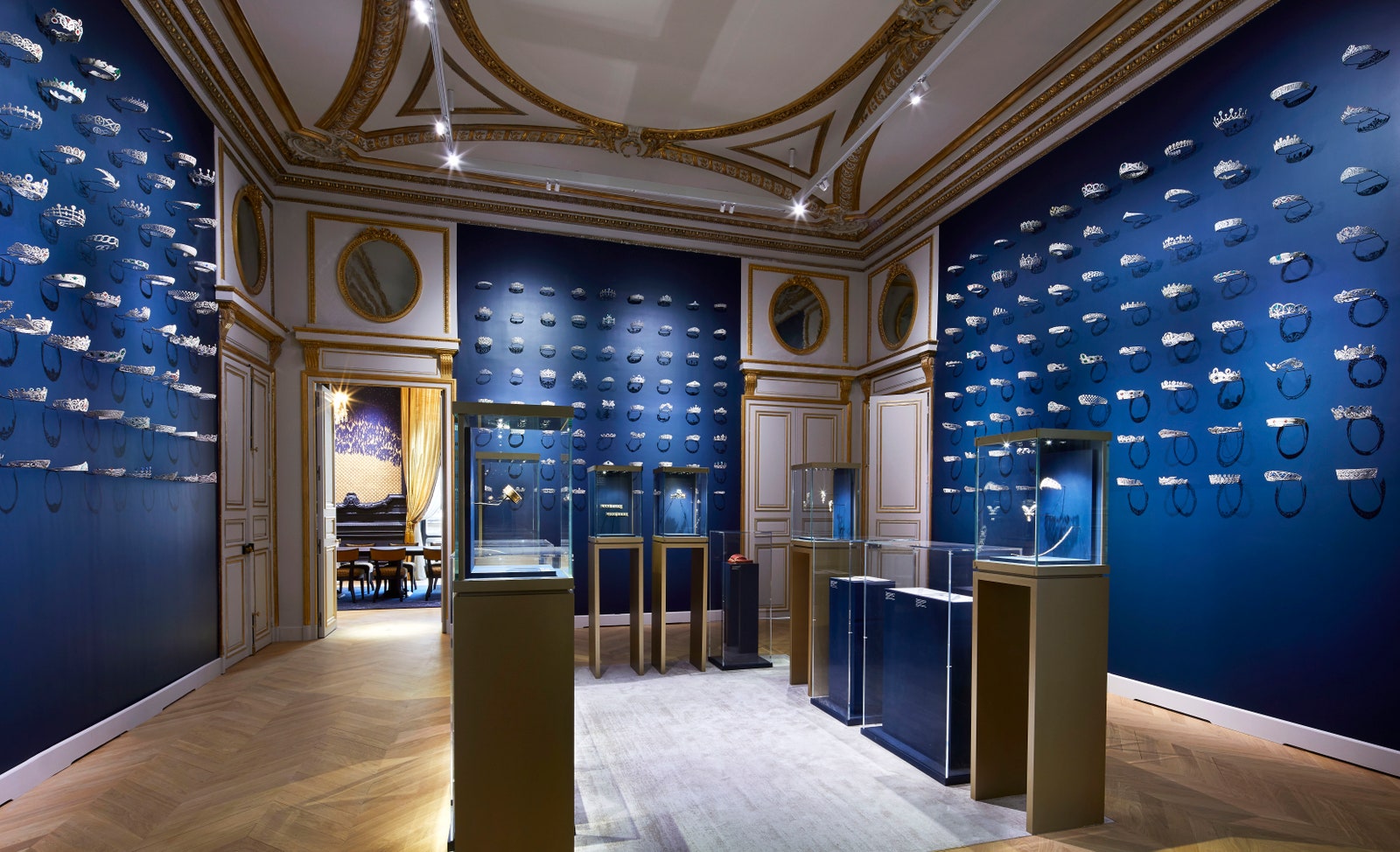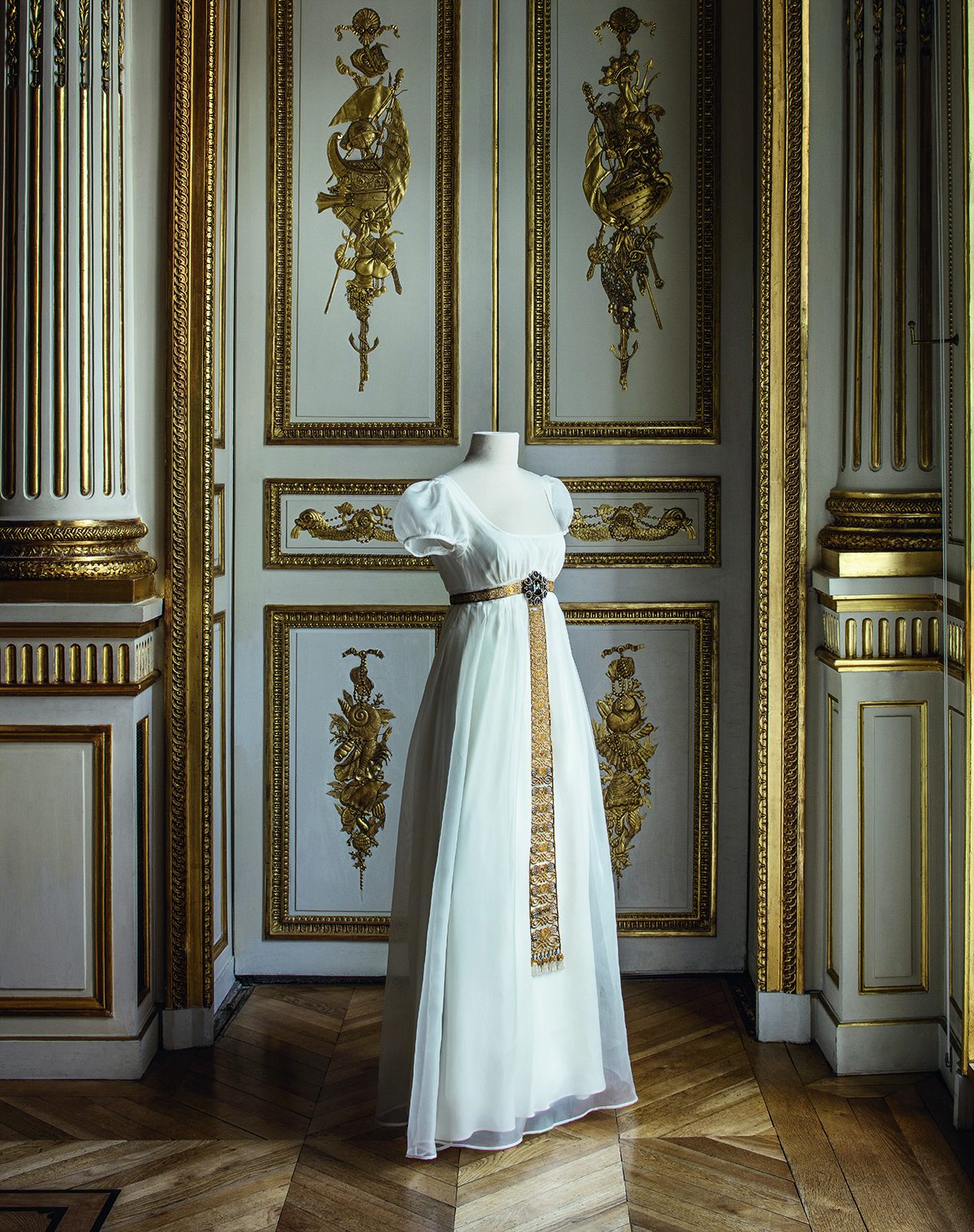Discover how Chaumet was inspired by Napoleon Ist and Josephine De Beauharnais

The Chaumet jewellery house has created an exhibition on the remarkable life and destiny of Josephine de Beauharnais and her husband, the Emperor Napoleon Ist. This exhibition, entitled “Joséphine and Napoleon: an (extra)ordinary story“, opens this Wednesday, May 19th and takes place in the private salons of the House’s historic address in the heart of Paris, at 12, place Vendôme.
This exhibition provides a frieze of the lives of the two lovers, but gives an insight into Josephine’s life in particular, bringing together exceptional jewellery, rare paintings, swords, snuff boxes, personal effects and fascinating documents belonging to her.

“We decided to organise this exhibition to mark the bicentenary of Napoleon’s death. Josephine was an extraordinary woman, who succeeded in planting one of the world’s greatest gardens while setting the pace in terms of decoration and style,” explains Jean-Marc Mansvelt, the CEO of Chaumet.
Featuring more than 150 artefacts, this exhibition traces both their love affair and the creations of François-Regnault Nitot, the son of the jewellery house’s founder and designer of tiaras and bracelets, a solid gold Gothic belt and a remarkable ceremonial sword in gold, bloodstone and tortoise shell for the emperor and his two successive wives. The emperor commissioned Nitot to make a famous oval tiara for the Pope Pius VII, which is now in the Vatican Museum.

Nitot became, in his own words, “the most envied supplier to the imperial court”. The exhibition includes a malachite cameo from 1810, decorated with pearls and tortoise shells.

For this exhibition, Chaumet was inspired by paintings in which the two spouses appeared, their success reflected in the spectacular portraits of Gérard, David or Garneray in outfits adorned with ermine and diamonds, all in sumptuous settings.
“Many of these paintings were both tools of political communication and works of art. A bit like social networks, but two hundred years ago,” notes Jean-Marc Mansvelt, during a visit of the exhibition.
Josephine de Beauharnais, a botanist during her lifetime, expressed an admiration for the study of wheat, which led to a vogue for tiaras in the shape of ears of wheat. The exhibition shows several examples, from Nitot’s 1811 version to the later Crèvecoeur tiaras. This passion for nature was naturally felt in his house at Malmaison, east of Paris, which she adorned it with one of the most beautiful gardens of the time, planted with species as different and exotic as each other. His menagerie even included black swans, kangaroos, llamas and Chinese golden pheasants.

For the little story, Napoleon was often absent, often on the move during wars in distant lands, as the old worn-out bicorn in the exhibition reminds us. Historians now believe that Josephine miscarried during a trip to Italy to visit her husband. Napoleon, who wanted above all to have an heir, and Josephine, who could not have any more children, announced his intention to divorce her at a dinner party in 1809. This particularly sad letter is on display in the exhibition, and reveals the written acceptance of the fallen empress, next to her fan, which was shattered with anger during this evening and these announcements.
This exhibition and the treasures it houses will be admired until the 18th of July 2021, by booking your ticket here!
Read also > THE CHANEL SALONS REDESIGNED BY JACQUES GRANGE
Featured photo: © Chaumet[/vc_column_text][/vc_column][/vc_row]
[EN] CLAIRE DOMERGUE, A SPECIALIST IN COMMUNICATION IN THE LUXURY SECTOR, HAS SURROUNDED HERSELF WITH EXPERTS TO CREATE THE FIRST MEDIA DEDICATED TO THE ECONOMIC NEWS OF LUXURY AND FASHION. THE LATTER DRAWS THE ATTENTION OF ITS READERS TO ALL THE MAJOR PLAYERS IN THESE SECTORS WHO SHARE THEIR EXPERIENCES, VISIONS AND KNOW-HOW. MORE THAN A SPECIALIZED WEBZINE, LUXUS PLUS IS A MULTI-SECTOR INFORMATION SYSTEM, WHICH HAS BECOME THE REFERENCE MONITORING TOOL FOR LUXURY AND FASHION PROFESSIONALS. OUR NEWSLETTERS CONTRIBUTE TO MAKE OUR READERS AWARE OF THE CHANGES AFFECTING THE LUXURY INDUSTRIES. THANKS TO AN INCREASED WATCH AND AN EXCELLENT KNOWLEDGE OF THE SECTOR, WE ARE INTERESTED IN THE MAIN ECONOMIC AND TECHNOLOGICAL STAKES OF FASHION, FINE WATCHMAKING, JEWELRY, GASTRONOMY, COSMETICS, PERFUMES, HOTELS, PRESTIGIOUS REAL ESTATE...********[FR] Claire Domergue, spécialiste de la communication dans le secteur du luxe, s’est entourée d’experts pour créer le premier média consacré à l’actualité économique du Luxe et de la mode. Ce dernier attire tout particulièrement l’attention de ses lecteurs sur l’ensemble des acteurs majeurs de ces secteurs qui y partagent leurs expériences, visions et savoir-faire. Plus qu’un webzine spécialisé, Luxus Plus est un système d’information multi-sectoriel, devenu l’outil de veille de référence pour les professionnels du luxe et de la mode. Nos newsletters de veille contribuent en effet à sensibiliser nos lecteurs aux mutations qui touchent les industries du luxe. Grâce à une veille accrue et à une excellente connaissance du secteur, nous nous intéressons aux principaux enjeux économiques et technologiques de la mode, la haute horlogerie, la joaillerie, la gastronomie, des cosmétiques, parfums, de l’hôtellerie, l’immobilier de prestige…






